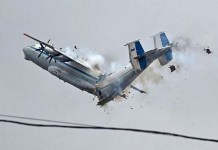The Indian Navy is set to acquire ‘submarine killer’ P-8I Poseidon from the US. The deployment of P-8I Poseidon in the Indian Ocean region can remarkably boost the capabilities of the Indian Navy which can detect, track and destroy hostile underwater drones and submarines.
Israel vs China: How Are Israeli Drones Battling Chinese UAVs On India-China Border?
The US has deployed the P-8Is to track its adversaries – China and Russia. The P-81 Poseidons have mastered in hunting Russian submarines. According to the Aviationist, in December 2016 Poseidons were engaged in hunting Oscar-class submarines in the Mediterranean and stopped short of eliminating the submarines. Experts call the P-8Is one of the strongest US assets for Naval warfare against China and Russia.
According to reports in HindustanTimes, the Indian Navy is all set to add additional 4 more ‘Submarine Killer’ P-8I Poseidon aircraft to its fleet. The American made Poseidon is designed for maritime patrol and submarine hunting and its addition comes at a time of increasing Chinese aggression in the Indian Ocean Region (IOR).
The Indian Navy has the option of buying another six from Boeing to be negotiated later in 2021. The P-8I Poseidon is integrated with the Harpoon Block II air-launched missiles and lightweight torpedoes, the reconnaissance craft – it can carry 129 sonobuoys to locate subs – turns into a deadly submarine killer that can also launch anti-ship missiles.
Developed by Boeing, the P-8I is designed for long-range anti-submarine warfare, anti-surface warfare, and intelligence, surveillance and reconnaissance missions. It has a range of about 2,200 km and flies at a maximum speed of 490 knots, or 789 km per hour.
A number of key systems on the P-8I are designed to track submerged submarines. A rotary launcher system in the rear of the P-8I can dispense sonar buoys into the water. A recent upgrade allows P-8Is to employ new Multistatic Active Coherent buoys that generate multiple sonar pulses over time, allowing for greater endurance and search range.
The P-8I also has its own acoustic sensor and even a new hydrocarbon sensor that can “sniff” for fuel vapour from submarines. The Poseidon can carry five missiles, depth charges or torpedoes in a rotary launcher in the rear hull, and six more on underwing racks.
The P-8I can use a special High Altitude Air Launch Accessory to transform its Mark 54 324-millimetre lightweight torpedoes into GPS-guided glide bombs that can be dropped from altitudes as high as thirty thousand feet.
The purchase of six P-8I was cleared by the Defence Acquisition Council in November 2019, long before the stand-off with an aggressive China along the Line of Actual Control in Ladakh.
With China acquiring a string of ports in Myanmar, Iran, Sri Lanka and Djibouti, the Indian Navy remains on high alert. According to experts at EurAsian Times, China is trying to contain the Indian Navy in the Indian Ocean region (IOR), an area which New Delhi considers its sphere of influence.
However, in the face of hostile aggression by China, India has not backed down. Instead, it has increased maritime exercises with Japan, the United States and is planning to do the same with Australia. The addition of the P-8I is a big boost to India’s long-range anti-submarine, reconnaissance, surveillance and electronic jamming capabilities in the IOR.
However, the P-8I is not just restricted to IOR, it can also carry out missions in the border regions with China and Pakistan. China is likely to be irked by India’s decision to add the P-81 to its fleet of reconnaissance planes since, at present, Beijing does not have an aircraft to match the abilities of the P8I.




